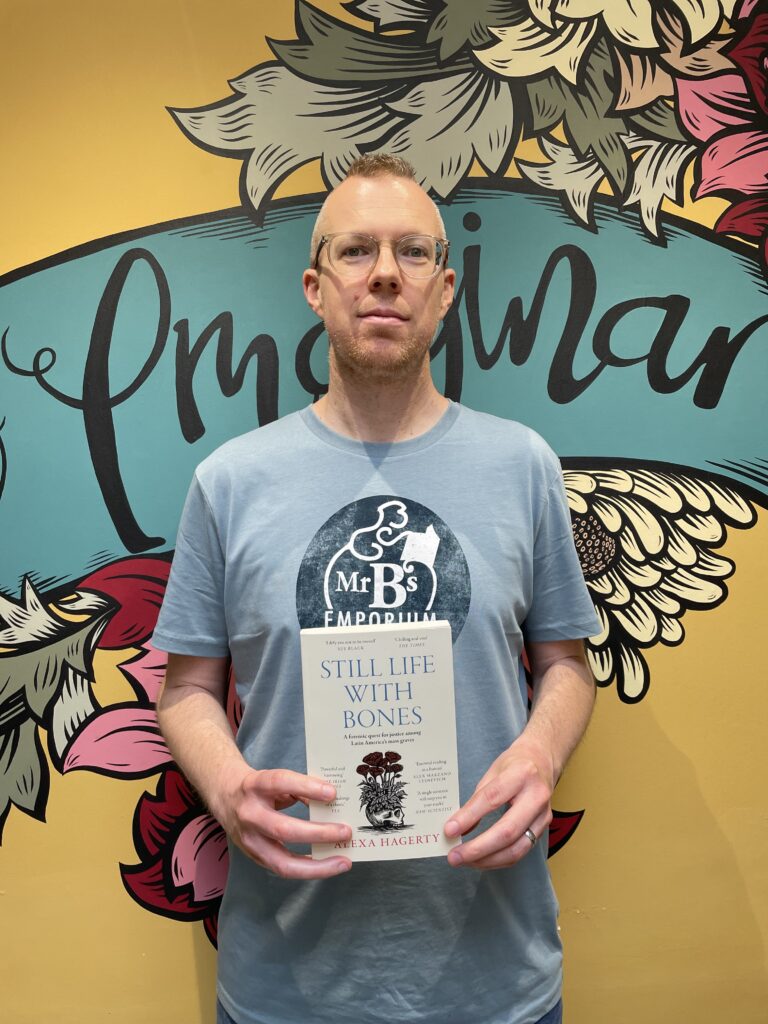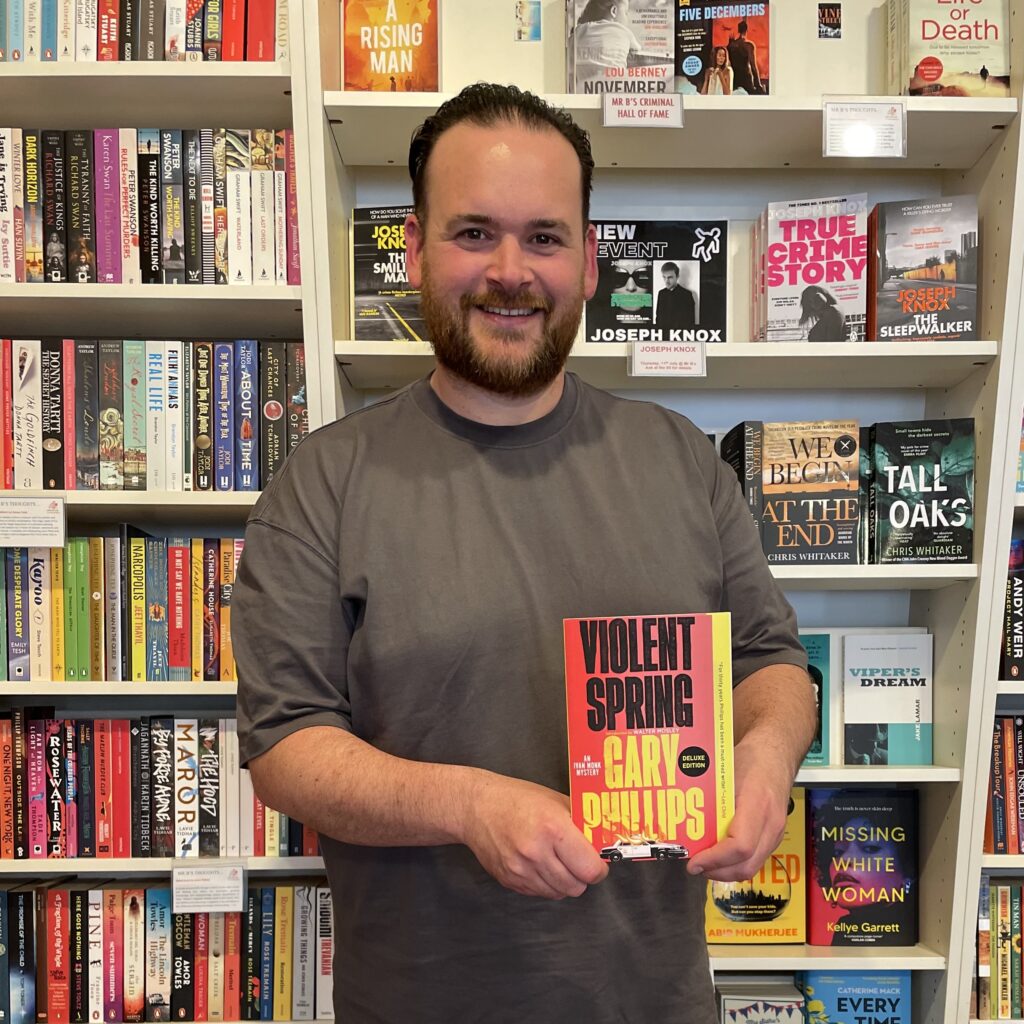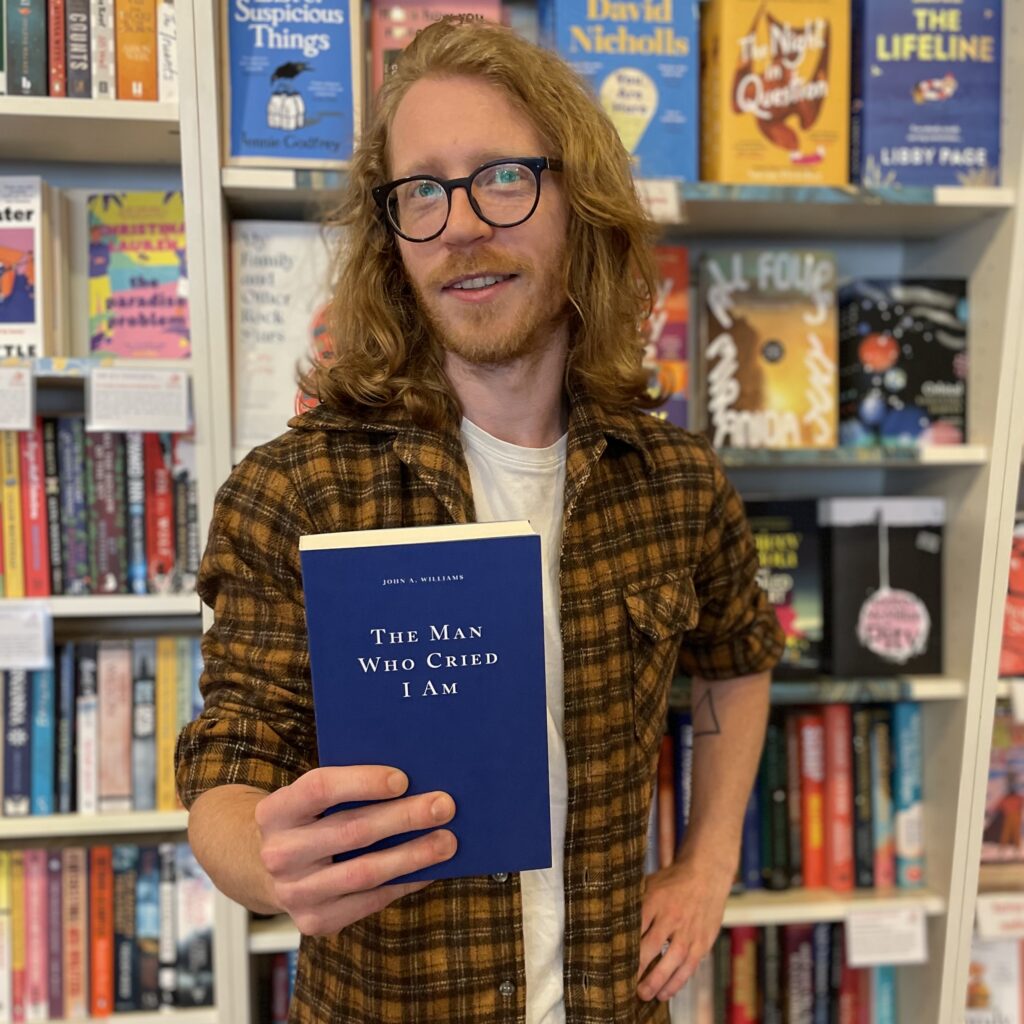Still Life with Bones by Alexa Hagerty
Still Life With Bones describes Alexa Hagerty’s forensic coming of age, searching for the bodies of the disappeared from mass graves in Guatemala and Argentina. Hagerty describes learning to see by the ‘flickering candle’ of forensic science: the bodies she attends to are by turns abstract clues in an investigation and fully, tragically human. Hagerty searches for cause of death alongside signs of a life lived: hands bound by rope, notches from machetes; a weaver recognised by the tiny bones of the toes, moulded by years of kneeling at a loom. She returns the bodies of the murdered to their surviving relatives, and works to hold the guilty to account. Alongside her forensic work she interviews survivors, revealing how the rituals of funerals and the cohesion of communities are affected and reconfigured in the wake of state terror and genocide. A powerful, poetic, vital read. – Sam
Violent Spring by Gary Phillips
Los Angeles, 1992. The heat of the Rodney King riots might have cooled, but the city is still a tinderbox. On a wrecked corner lot at the infamous Florence and Normandie intersection, ground is broken on a new community store. It was supposed to be the first steps towards recovery – then the body of a missing Korean shopkeeper is dug up and everything changes. As a show of good faith – and mistrusting the local cops – the Korean business association hires Black private eye Ivan Monk to investigate. Caught between corrupt politicians, shady business owners and street gangs, can Monk solve the case and keep everything from lighting up again? This classic PI novel, now in print in the UK for the first time and a must-read for fans of Michael Connolly and Walter Moseley, was the launchpad of Phillips career, and is the perfect place to start if you are new to his work. – Tom M
The Man Who Cried I am by John A. Williams
Long and dense as hell, but has got the same kind of rage-filled flare as James Baldwin (I feel terrible and reductive for comparing the two, but there are parallels).
Seen through the eyes of journalist Max Reddick in the 60s, who is trying to overcome racial stereotypes and obstacles to become respected in his field. Moving through time and various countries The Man Who Cried I am is a bit more history-driven than passion-driven (though there’s tons of that too), but his historical detail provides a fair amount more context. Probably makes him less appealing than Baldwin, but gives Williams more of a niche audience for those who are really keen on social history. – Tom B



